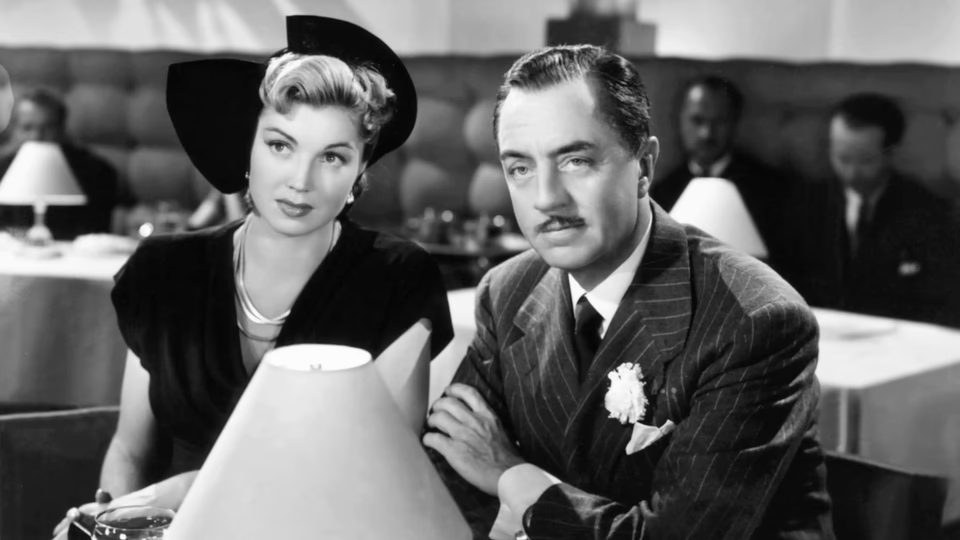The Hoodlum Saint

William Powell plays a newspaper man returned home from World War I to find himself unemployed and broke. He finagles a job as a corporate executive, amasses a fortune, loses it in the crash of ‘29, and finds religion.
While that synopsis describes the plot, it doesn’t capture the execution. Before the war, Powell worked as night desk editor at a Baltimore paper, and thus had a slew of underworld connections. These manifest via a gang of Runyonesque hoods, including James Gleason and Frank McHugh that serve as Powell’s gang early and hangers-on later. One gets the sense they’re intended to charm, but they rob Powell, hit him up for handouts, and disregard his pleas for them to go legit.
Powell himself struggles to rise above his underwritten role. He gets his first job for a local tycoon writing hit-pieces attacking a rival businessman. Along the way, he meets Esther Williams, his ostensible love interest. She struggles with the clunky dialog, delivering many lines as though reading from cue cards. Even worse, the pair have no chemistry. This makes sense given the almost thirty-year age gap. He’s been making movies as long as she’s been alive.
Anyway, Powell switches sides and goes to work for the competition, leaving Williams and heading to New York to make his fortune. He returns three years later to find her about to wed. Depressed, Powell returns to New York and begins seeing a lounge singer played by Angela Lansbury. In the inevitable confrontation, Williams gets the better lighting and angles, but Lansbury conveys more resonant emotion.
The Runyonesque gang resurfaces after Gleason ends up in jail expecting Powell to bail him out. Powell hatches a scheme to convince the gang that only Saint Dismas, the patron saint of repentant thieves, can help. The crew deliver this solemn news to Gleason in his cell, shrouded in dark bar shadows, and accompanied by minor-key organ music on the soundtrack. Powell springs Gleason behind the scenes and soon the gang has found religion.
Somehow this coincides with them investing all their money in Powell’s company. The crash hits, wiping out everyone and leaving Powell penniless, friendless, and unemployed. Gleason urges Powell to pray to Saint Dismas. Powell shrugs it off, but Gleason says he’ll put in a good word and soon Powell lands a job back in Baltimore.
This proves providential enough to convince Powell, though he compartmentalizes his growing faith. A plot-convenient health-scare lands Powell in a convalescent hospital where the doctor informs him he must have “no mental conflict”.
Powell receives word from Gleason that the rest of the gang are running a Saint Dismas charity as a racket, skimming from the top. Powell returns to New York to convince the gang to go straight, parading out a kid with a leg brace to show the charity’s good work. The gang—now lead by Lansbury—laugh him out the door.
Despondent, Powell walks to the local church, kneels before the statue of Dismas, and, with tears streaming down his face, prays. This convinces the old gang, who replace the skimmed money.
Powell and Williams end up together and the film closes with them buying an antique clock. They insist on removing the hands so they’ll “never know what time it is,” because that’s supposed to mean something.
If this seems long, convoluted, and trite, then I’ve conveyed the execution. I’ve seen the film twice now, and I’m still not sure what it’s trying to say. I’m not convinced anyone involved knew either.